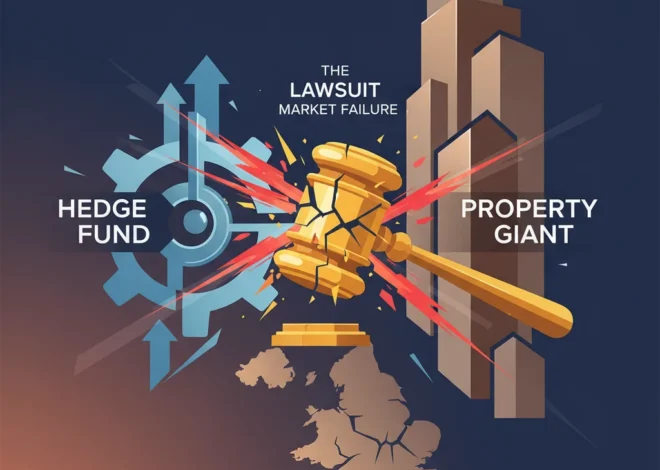
Back to the Garden: Why Tech and Finance Must Rediscover Their Purpose
In the annals of cultural history, few events carry the mythical weight of Woodstock. It was more than a music festival; it was the zenith of a counter-cultural movement, a moment brimming with utopian ideals of peace, love, and a new way of living. In her iconic anthem “Woodstock,” Joni Mitchell captured this spirit with the line, “We are stardust, we are golden… and we’ve got to get ourselves back to the garden.” It was a call to return to a purer, more authentic state. Decades later, this sentiment finds a surprising echo in a very different revolution: the one that has reshaped our global economy and financial systems.
A poignant letter to the Financial Times recently drew this very parallel, suggesting that the modern “techlash” is our generation’s moment of reckoning—a sign that the tech industry, much like the Woodstock generation, has lost its way and needs to find its way “back to the garden.” This metaphor is particularly potent when examining the world of finance, where the promises of financial technology (fintech) were just as grand and transformative. From democratizing the stock market to banking the unbanked with blockchain, the vision was golden. Yet today, that shine is tarnished by concerns over privacy, market manipulation, and digital divides. This is the story of how finance and technology left the garden—and the difficult journey they must now undertake to return.
The “Stardust and Golden” Era: The Utopian Promise of Fintech
The dawn of the digital age was fueled by an ideology that blended the free-spirited ideals of the 60s with a fierce entrepreneurial drive. The promise was not just about new products; it was about a new world. The internet would flatten hierarchies, decentralize power, and connect humanity. In the financial sector, this manifested as the fintech revolution—a movement poised to dismantle the old, stuffy citadels of traditional banking and investing.
The early promises were intoxicating:
- Democratization of Investing: Platforms like E*TRADE and later Robinhood promised to break down the barriers to the stock market, allowing anyone with a smartphone and a few dollars to become an investor. The complex world of trading was suddenly accessible.
- Financial Inclusion: Peer-to-peer lending platforms and digital-only banks aimed to serve those neglected by traditional institutions, offering lower fees and more accessible services.
- The Blockchain Revelation: At the heart of this utopian vision was blockchain technology. Cryptocurrencies like Bitcoin were hailed as the ultimate tool for decentralization—a way to transact without intermediaries, fight inflation, and empower individuals globally. The dream was a transparent, permissionless financial system for all.
This was the “golden” era. The narrative was compelling: technology as the great equalizer, empowering the individual against the monolithic institutions that had long controlled the flow of capital. The possibilities seemed as limitless as the cosmos from which Mitchell’s “stardust” came.
The Fall from Grace: How the Tech Dream Soured
Just as the idealism of the 1960s eventually gave way to the cynicism of the 1970s, the utopian vision of tech began to crumble under the weight of its own success. The “move fast and break things” mantra, once a celebrated call to innovation, started to look more like a reckless disregard for consequences. This “techlash” wasn’t a single event but a slow-dawning realization that the tools meant to liberate us could also be used to control, divide, and exploit.
In the financial world, the cracks began to show in stark relief. The dream of democratization often morphed into a more complicated reality. Below is a comparison of the initial promises of modern financial technology versus the eventual outcomes that have drawn public and regulatory scrutiny.
| The “Golden” Promise | The Complicated Reality |
|---|---|
| Democratize Trading for All | The “gamification” of investing, encouraging risky, high-frequency trading among inexperienced users, as seen in the controversies surrounding platforms like Robinhood. |
| Decentralize Finance with Blockchain | The rise of centralized crypto exchanges (like the infamous FTX) that acted like unregulated banks, leading to catastrophic losses and exposing the immaturity of the ecosystem. |
| Provide Fairer Access to Credit | Opaque algorithms used for lending decisions raised concerns about new forms of digital redlining and algorithmic bias that could perpetuate existing inequalities. |
| Empower Users with Their Data | Massive data collection by fintech apps, often with unclear privacy policies, turning personal financial information into a highly valuable, and vulnerable, commodity. |
The very technologies designed to disintermediate old power structures created new ones. Big Tech companies became gatekeepers of the digital economy, and the promise of a decentralized web gave way to a landscape dominated by a few powerful players. The crypto space, meant to be a transparent alternative, became a breeding ground for speculation, scams, and projects that, according to a report by the Bank for International Settlements, often failed to deliver on their core promises of true decentralization.
Charting a Course “Back to the Garden”: The Future of Responsible Finance
Getting “back to the garden” does not mean abandoning technology or regressing to an earlier time. It means recapturing the original, positive spirit of the movement while integrating the hard-won wisdom of past failures. For the worlds of tech and finance, this return journey requires a conscious, multi-faceted effort focused on responsibility, ethics, and long-term value over short-term hype.
This journey can be guided by several key principles that investors, leaders, and consumers should watch for and demand. These pillars form the foundation of a more mature and sustainable financial technology ecosystem.
| Pillar of Responsibility | Key Actions & Implications |
|---|---|
| Intelligent Regulation | Moving beyond a reactive stance to create proactive, clear regulatory frameworks for digital assets, AI in finance, and data privacy (like Europe’s GDPR). The goal is to foster innovation while protecting consumers. |
| Ethical Technology Design | Embedding ethical considerations directly into the product development lifecycle. This means designing AI that avoids bias, creating trading platforms that promote sound financial habits, and prioritizing user well-being over engagement metrics. |
| Investor & Consumer Activism | The growing demand for Environmental, Social, and Governance (ESG) criteria is a powerful market force. A PwC report projects ESG assets will make up a significant portion of total assets under management, pushing companies to be more transparent and accountable. |
| True Decentralization & Utility | For blockchain, the focus must shift from speculative assets to real-world utility. This includes building decentralized finance (DeFi) applications that are secure, user-friendly, and solve actual problems in areas like cross-border payments, identity management, and supply chain finance. |
This path forward requires a new social contract between technology providers, regulators, and the public. The future of economics and finance will not be shaped by code alone, but by the values we embed within that code. It’s about building systems that are not just efficient and profitable, but also fair, transparent, and resilient.
The 500-Year Portfolio: What a Tudor Mansion Teaches Us About Modern Investing
Take Artificial Intelligence in finance, for example. It has the potential to create hyper-personalized financial advice for millions, or it could be used to create deeply discriminatory lending models. The choice lies not in the technology itself, but in the governance and ethical guardrails we build around it. Similarly, the next generation of fintech innovators has a unique opportunity to build companies where data privacy is a core feature, not an afterthought—a key differentiator that can build lasting consumer trust.
High Stakes at the High Court: The Trillion-Dollar Question of Presidential Tariff Power
Conclusion: Recapturing the Golden Spirit
The journey of the tech revolution, especially within finance, has mirrored the arc of Joni Mitchell’s song. It began with a “golden” vision of a better, more open world. It got lost in a “bomber death plane” of unintended consequences, hype cycles, and ethical missteps. Now, it faces a collective call to get “back to the garden.”
This return is not a retreat. It is a maturation. It is about harnessing the incredible power of financial technology, blockchain, and data with a renewed sense of purpose and responsibility. For investors, it means looking beyond fleeting trends to support companies building sustainable, long-term value. For business leaders, it means cultivating a culture of ethical innovation. And for all of us, it means demanding that the tools shaping our modern economy are built to serve humanity’s best interests.
The stardust—the raw potential of technology—is still there. The challenge is to prove that we can once again be golden, building a financial future that is not just technologically advanced, but also profoundly more human.


